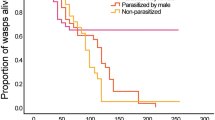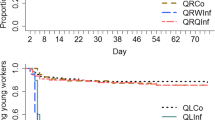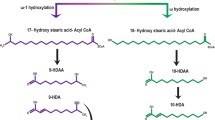Abstract
Insect social parasites, like other parasites, may benefit from inhibiting their host from reproducing (complete or partial parasitic castration) because they can then exploit more of the host’s resources for their own reproduction. In particular, social parasites that kill or expel the host queen need to prevent host workers from reproducing; this is a common worker response to the absence of their queen. Indeed, host workers would benefit from detecting the presence of the parasite and investing in direct and indirect fitness. Studying whether and how social parasites control host worker reproduction can provide information about the degree of integration of the parasite in the host colony and help identify factors regulating workers’ reproductive decisions in social insects. We investigated whether the paper wasp social parasite, Polistes sulcifer, suppresses Polistes dominula (host) worker reproduction as efficiently as the dominant host female does in queen-right colonies by comparing worker reproductive efforts in parasitized and non-parasitized (control) colonies. Our results show that 6 weeks after usurpation of their colony by the social parasite, parasitized workers (1) had more developed ovaries than control workers and (2) laid more eggs as soon as the opportunity arose. This reproductive readiness of parasitized workers was not apparent 2 weeks after colony usurpation. This suggests that P. dominula workers have evolved means to react to social parasitism, as occurs in some ants, and that the parasite has only limited control over host reproduction.

Similar content being viewed by others
References
Achenbach A, Foitzik S (2009) First evidence for slave rebellion: enslaved ant workers systematically kill the brood of their social parasite. Evolution 63:1068–1075
Achenbach A, Witte V, Foitzik S (2010) Brood exchange experiments and chemical analyses shed light on slave rebellion in ants. Behav Ecol 21:948–956
Alford DV (1975) Bumble bees. Davis-Poynter, London
Bagnères AG, Lorenzi MC, Dusticier G, Turillazzi S, Clément JL (1996) Chemical usurpation of a nest by paper wasp parasites. Science 272:889–892
Baudoin M (1975) Host castration as a parasitic strategy. Evolution 29:335–352
Bourke AFG (2011) Principles of social evolution. Oxford series in ecology and evolution. Oxford University Press, Oxford
Brandt M, Foitzik S, Fischer-Blass B, Heinze J (2005) The coevolutionary dynamics of obligate ant social parasite systems: between prudence and antagonism. Biol Rev 80:1–17
Cervo R (2006) Polistes wasps and their social parasites: an overview. Ann Zool Fenn 43:531–549
Cervo R, Lorenzi C (1996) Inhibition of host queen reproductive capacity by the obligate social parasite Polistes atrimandibularis (Hymenoptera, Vespidae). Ethology 102:1042–1047
Cervo R, Turillazzi S (1996) Host nest preference and nest choice in the cuckoo paper wasp Polistes sulcifer (Hymenoptera, Vespidae). J Insect Behav 9:297–306
Cervo R, Macinai V, Dechigi TS (2004) Fast growth of immature brood in a social parasite wasp: a convergent evolution between avian and insect cuckoos. Am Nat 164:814–820. doi:10.1086/425987
Cervo R, Dani FR, Cotoneschi C, Scala C, Lotti I, Strassmann JE, Queller DC, Turillazzi S (2008a) Why are larvae of the social parasite wasp Polistes sulcifer not removed from the host nest? Behav Ecol Sociobiol 62:319–1331
Cervo R, Dapporto L, Beani L, Strassmann JE, Turillazzi S (2008b) On status badges and quality signals in the paper wasp Polistes dominulus: body size, facial colour patterns and hierarchical rank. Proc R Soc B 275:1189–1196
Chernenko A, Vidal-Garcia M, Helanterä H, Sundström L (2013) Colony take-over and brood survival in temporary social parasites of the ant genus Formica. Behav Ecol Sociobiol 67:727–735
Cini A, Bruschini C, Poggi L, Cervo R (2011) Fight or fool? Physical strength, instead of sensory deception, matters in host nest invasion by a wasp social parasite. Anim Behav 81(6):1139–1145
Cini A, Meconcelli S, Cervo R (2013) Ovarian indexes as indicators of reproductive investment and egg-laying activity in social insects: a comparison among methods. Insect Soc 60:393–402
Dani FR, Giovannotti M, Cervo R, Turillazzi S (2004) Esiste integrazione chimica fra la prole del parassita sociale Polistes sulcifer e quella del suo ospite P. dominulus (Hymenoptera: Vespidae)? In: XIX Congresso Nazionale Italiano di Entomologia, Catania, giugno, pp. 377–380
Dapporto L, Cervo R, Sledge MF, Turillazzi S (2004) Rank integration in dominance hierarchies of host colonies by the paper wasp social parasite Polistes sulcifer (Hymenoptera, Vespidae). J Insect Physiol 50:217–223
Dapporto L, Sledge MF, Turillazzi S (2005) Dynamics of cuticular chemical profiles of Polistes dominulus workers in orphaned nests. J Insect Physiol 51:969–973
Dapporto L, Dani FR, Turillazzi S (2007) Social dominance molds cuticular and egg chemical blends in a paper wasp. Curr Biol 17:504–505. doi:10.1016/j.cub.2007.05.002
Fischer B, Foitzik S (2004) Local coadaptation leading to a geographical mosaic of coevolution in a social parasite system. J Evol Biol 17:1026–1034
Fisher RM (1983) Inability of the social parasite Psithyrus ashtoni to suppress ovarian development in workers of Bombus affinis (Hymenoptera; Apidae). J Kans Entomol Soc 56:69–73
Fisher RM (1984) Dominance by a bumble bee social parasite (Psithyrus citrinus) over workers of its host (Bombus impatiens). Anim Behav 32:304–305
Fittkau EJ, Klinge H (1973) On biomass and trophic structure of the central Amazonian rain forest ecosystem. Biotropica 5:2–14
Foitzik S, DeHeer CJ, Hunjan DN, Herbers JM (2001) Coevolution in host–parasite systems: behavioural strategies of slave-making ants and their hosts. Proc R Soc B 268:1139–1146
Foitzik S, Fischer B, Heinze J (2003) Arms races between social parasites and their hosts: geographic patterns of manipulation and resistance. Behav Ecol 14:80–88
Green JP, Field J (2011) Assessment between species: information gathering in usurpation contests between a paper wasp and its social parasite. Anim Behav 81(6):1263–1269
Greene A, Akre RD, Landolt PJ (1978) Behavior of the yellowjacket social parasite, Dolichovespula arctica (Rohwer) (Hymenoptera: Vespidae). Melanderia 29:1–28
Heinze J (2008) Hierarchy length in orphaned colonies of the ant Temnothorax nylanderi. Naturwissenschaften 95:757–760
Hölldobler B, Wilson EO (1990) The ants. Springer, Berlin
Hurd H (2001) Host fecundity reduction: a strategy for damage limitation? Trends Parasitol 17:363–368
Jeanne RL (1977) Behavior of the obligate social parasite Vespula arctica (Hymenoptera: Vespidae). J Kans Entomol Soc 50:541–557
Kreuter K, Bunk E, Lückemeyer A, Twele R, Francke W, Ayasse M (2012) How the social parasitic bumblebee Bombus bohemicus sneaks into power of reproduction. Behav Ecol Sociobiol 66:475–486
Liebig J, Monnin T, Turillazzi S (2005) Direct assessment of queen quality and lack of worker suppression in a paper wasp. Proc R Soc Lond B 272:1339–1344. doi:10.1098/rspb.2005.3073
Lorenzi MC (2006) The result of an arms race: the chemical strategies of Polistes social parasites. Ann Zool Fenn 43:550–563
Lorenzi MC, Thompson JN (2011) The geographic structure of selection on a coevolving interaction between social parasitic wasps and their hosts hampers social evolution. Evolution 65:3527–3542. doi:10.1111/j.1558-5646.2011.01403.x
Lowe RM, Ward SA, Crozier RH (2002) The evolution of parasites from their hosts: intra- and interspecific parasitism and Emery’s rule. Proc R Soc Lond B 269:1301–1305
Martin SJ, Carruthers JM, Williams PH, Drijfhout FP (2010) Host specific social parasites (Psithyrus) indicate chemical recognition system in bumblebees. J Chem Ecol 36:855–863
Michener CD (1974) The social behavior of the bees: a comparative study. The Belknap Press of Harvard University Press, Cambridge, Massachussetts
Monnin T, Ratnieks FLW (2001) Policing in queenless ponerine ants. Behav Ecol Sociobiol 50:97–108
Monnin T, Ratnieks FLW, Jones GR, Beard R (2002) Pretender punishment induced by chemical signalling in a queenless ant. Nature 419:61–65
Monnin T, Ratnieks FLW, Brandão CRF (2003) Reproductive conflict in animal societies: hierarchy length increases with colony size in queenless ponerine ants. Behav Ecol Sociobiol 54:71–79
Monnin T, Cini A, Lecat V, Fédérici P, Doums C (2009) No actual conflict over colony inheritance despite high potential conflict in the social wasp Polistes dominulus. Proc R Soc B 276:1593–1601. doi:10.1098/rspb.2008.1739
Neumann P, Radloff SE, Moritz RFA, Hepburn HR, Reece SL (2001) Social parasitism by honeybee workers (Apis mellifera capensis Escholtz): host finding and resistance of hybrid host colonies. Behav Ecol 12:419–428
Nonacs P (2000) Measuring and using skew in the study of social behaviour and evolution. Am Nat 156:577–589. doi:10.1086/316995
Nonacs P, Hager R (2011) The past, present and future of reproductive skew theory and experiments. Biol Rev 86:271–298
Ortolani I, Turillazzi S, Cervo R (2008) Spring usurpation restlessness: a wasp social parasite adapts its seasonal activity to the host cycle. Ethology 114:782–788
Ortolani I, Zecchini L, Turillazzi S, Cervo R (2010) Recognition of a paper wasp social parasite by its host: evidence for a visual signal reducing host aggressiveness. Anim Behav 80:683–688. doi:10.1016/j.anbehav.2010.07.003
Pamminger T, Leingärtner A, Achenbach A, Kleeberg I, Pennings PS, Foitzik S (2013) Geographic distribution of the anti-parasite trait “slave rebellion”. Evol Ecol 27:39–49
Pardi L (1946) Ricerche sui Polistini VII. La “dominazione” ed il ciclo ovarico annuale di Polistes gallicus (L.). Boll Ist Entomol Univ Bologna 15:25–84
Queller DC, Zacchi F, Cervo R, Turillazzi S, Henshaw MT, Santorelli LA, Strassman JE (2000) Unrelated helpers in a social insect. Nature 405:784–787. doi:10.1038/35015552
Ratnieks FLW, Foster KR, Wenseleers T (2006) Conflict resolution in insect societies. Ann Rev Entomol 51:581–608
Reeve HK (1991) Polistes. In: Ross K, Matthews R (eds) The social biology of wasps. Cornell University Press, Ithaca, pp 99–148
Reeve HK, Peters JM, Nonacs P, Starks PT (1998) Dispersal of first ‘workers’ in social wasps: causes and implications of an alternative reproductive strategy. Proc Natl Acad Sci U S A 95:13737–13742. doi:10.1073/pnas.95.23.13737
Ruano F, Devers S, Sanllorente O, Errard C, Tinaut A, Lenoir A (2011) A geographical mosaic of coevolution in a slave‐making host–parasite system. J Evolution Biol 24:1071–1079
Savolainen R, Vepsäläinen K (2003) Sympatric speciation through intraspecific social parasitism. Proc Natl Acad Sci U S A 100:7169–7174
Strassmann JE, Fortunato A, Cervo R, Turillazzi S, Damon JM, Queller DC (2004) The cost of queen loss in the social wasp Polistes dominulus (Hymenoptera: Vespidae). J Kansas Entomol Soc 77:343–355
Teseo S, Kronauer DJ, Jaisson P, Châline N (2013) Enforcement of reproductive synchrony via policing in a clonal ant. Current Biol 23:328–332
Tibbetts EA, Mettler A, Levy S (2010) Mutual assessment via visual status signals in Polistes dominulus wasps. Biol Lett 6:10–13. doi:10.1098/rsbl.2009.0420
Turillazzi S, Cervo R (1996) Oofagy and infanticide in colonies of social wasps. In: Parmigiani S, Vom Saal FS (eds) Infanticide and parental care. Harwood Academic, Newark, pp 213–236
Turillazzi S, Cervo R, Cavallari I (1990) Invasion of the nest of Polistes dominulus by the social parasite Sulcopolistes sulcifer (Hymenoptera, Vespidae). Ethology 84:47–59
Turillazzi S, Cervo R, Zanobetti L (1991) Control of host reproduction by social parasite Sulcopolistes sulcifer (Hymenoptera, Vespidae). Act Coll Insect S 7:97–102
Turillazzi S, Sledge MF, Dani FR, Cervo R, Massolo A, Fondelli L (2000) Social hackers: integration in the host chemical recognition system by a paper wasp social parasite. Naturwissenschaften 87:172–176
Vergara CH, Schroder S, Almanza MT, Wittmann D (2003) Suppression of ovarian development of Bombus terrestris workers by B. terrestris queens, Psithyrus vestalis and Psithyrus bohemicus females. Apidologie 34:563–568
Wenseleers T, Ratnieks FLW (2006) Enforced altruism in insect societies. Nature 444:50. doi:10.1038/444050a
Wenseleers T, Helanterä H, Hart A, Ratnieks FLW (2004) Worker reproduction and policing in insect societies: an ESS analysis. J Evol Biol 17:1035–1047
Wilson EO (1971) The insect societies. Harvard University Press, Cambridge, p 548
Wilson EO (1990) Success and dominance in ecosystems: the case of the social insects. Ecology Institute, Oldendorf/Luhe
Zimma BO, Ayasse M, Tengö J, Ibarra F, Franke W (2002) The role of semiochemicals in the reproductive biology of the social parasitic bumblebee Psithyrus norvegicus. In: Proc XIV international congress of IUSSI, Sapporo, Japan, p 136
Acknowledgments
We thank the referees for their helpful comments and Laura Aquiloni, Claudie Doums, Stefano Turillazzi and all members of “Gruppo Vespe” for the logistical support and useful comments on an earlier version of the paper. We are grateful to Carlotta Cini for the language revision and to Adam Cronin for both the useful comments and language revision. Funds were provided by the University of Florence (to RC) and the Fondation Fyssen (to AC).
Author information
Authors and Affiliations
Corresponding author
Additional information
Communicated by S. Cremer
Rights and permissions
About this article
Cite this article
Cini, A., Nieri, R., Dapporto, L. et al. Almost royal: incomplete suppression of host worker ovarian development by a social parasite wasp. Behav Ecol Sociobiol 68, 467–475 (2014). https://doi.org/10.1007/s00265-013-1661-z
Received:
Revised:
Accepted:
Published:
Issue Date:
DOI: https://doi.org/10.1007/s00265-013-1661-z




